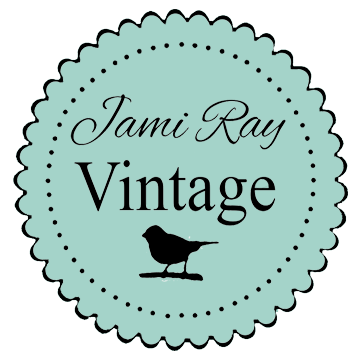Decoupage: It's French, So It Must Be Awesome!
Share
I'm always looking for great ways to dress up vintage pieces that I find at estate sales, thrift stores, etc. One of my favorite crafts for refreshing my latest finds is decoupage. If you are not quite sure what decoupage is, just know that it's French. So it has to be awesome, right?
Despite its French name, decoupage isn't all that complicated. You also don't have to be an art major to do well with it. Some of the best DIY crafters I have ever known have mastered decoupage with little more than a creative eye and a willingness to learn. You can master it, too.
What It Is
The word 'decoupage' comes from a French word that means to 'cut out'. As a craft, decoupage involves cutting things from a variety of sources – magazines, advertisements, catalogs, or even fabric – and applying them to something else. It is the quintessential form of cutting and pasting. However, do not take that to mean that decoupage is strictly for kids. Kids do enjoy it, but it's quite the art form to adults willing to put some effort into it.
Decoupage transcends mere cutting and pasting when you enhance it with other artistic effects. You can embellish with paint or ink. You can add gold or silver leaf. There really are no limits. That is the beauty of decoupage as a craft. There are no rules. Combine grade school cutting and pasting with fine works of art from Salvador Dali if you want. It's up to you.
Basic Decoupage Principles
Though there are no rules in terms of what you apply and the surface to which you apply it, there are some basic guidelines crafters tend to follow. The guidelines are more of function than anything else, so feel free to experiment as you see fit. Trying new things and seeing if they work is what makes decoupage so much fun.
Anyway, here are the basic principles:
1. Start with a Clean Surface
You truly can choose any surface as a canvas for your decoupage. In the past, I have worked with wood, glass, metal, and fabric surfaces. Even something like terra-cotta isn't out of the question. One thing to remember regardless of your surface is that it needs to be clean before you start applying things.
Different surfaces have to be cleaned in different ways. If you are not sure how to clean a piece before you get started, do a quick search online. You're bound to find the answer.
2. Choose a Primary Application
Though you can literally cut and paste anything you want to your surface, it is a good idea to choose a primary application. You might start with a wood surface and a plan to apply paper. Likewise, you might decide to apply fabric pieces to a metal surface. At any rate, starting with a primary application gives you a framework around which you can build the entire project.
3. Choose the Right Adhesive
It's important that you choose the right adhesive for your project. Some adhesives don't work well on some surfaces. How do you know? By reading labels. A product's label will tell you exactly what you can use it on and what you can't.
We love DIY crafts here at Jami Ray Vintage. We also love to share our craft with others. If you're new to the whole decoupage thing, browse our blog for related topics. Most of our blogs contain links to helpful videos where we show friends how to do the things we do. We have lots of great information on decoupage.
